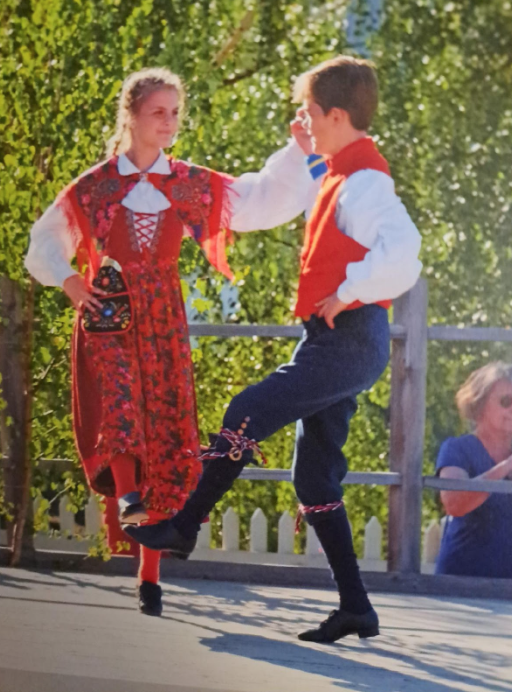Text:
Folkdräkt – Swedish Attire that depicts family history
Context:
Informant: “Folkdräkt is a dress outfit for women and Busserull shirt and trouser set for men. It represents where an individual’s family comes from, or in many cases, like my siblings and I, the garment is passed from generation to generation. My Folkdräkt is from Mora, Sweden in Dalarna County. Each Folkdräkt from each family has its own distinct patters and garment styles. They are a result of the family’s history, and their certain ties with perhaps specific flowers that can be depicted in Folkdräkt. It is not rare for Folkdräkt within the same region to look very similar, for they are often influenced by geographic elements and resources. Folkdräkt is often worn at weddings and festivals, or any event that may include Hambo. Typically children are the ones performing for adults, but the reverse can also be true.“

Analysis:
Folkdräkt is a dress attire within Sweden that can be used to trace a family’s lineage, or geographical origins. As a folk costume, it is powerful since it’s a physical tie between the individual and their extended history. Nordic countries are known for having a rich, strong sense of folk, that extends from their weaponization of folk to protect themselves since they are smaller countries. Here we can see that this concept may not only occur on the national level, but can be applied to individual families as well. Families within Sweden use Folkdräkt as a catalyst to be able to distinguish themselves from other families. This comes from a desire to be able to define your legacy from others, within a stream of millions of legacies. It is also interesting that Folkdräkt quite literally translates to folk attire, with “dräkt” meaning suit or attire, and folk being an english cognate.
